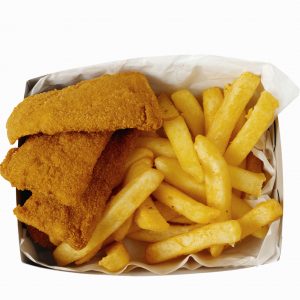
Cholesterol is produced by the body and is also found in the foods we eat. Consuming foods high in LDL (bad) cholesterol, along with foods high in saturated and trans fats, can bring your cholesterol levels up, along with some serious health risks. You should opt for foods low in cholesterol and in unhealthy fats in order to boost your HDL (good) cholesterol for the optimal health of your heart.
LDL (bad) cholesterol
LDL cholesterol is what gives cholesterol its bad name. LDL cholesterol helps in the formation of plaques – thick, hard deposits that can clog arteries and make them less flexible. This condition is known as atherosclerosis. Atherosclerosis can happen in almost any artery. If a clot forms and blocks an artery in the heart or brain, it can result in a heart attack or stroke. Another condition called peripheral artery disease can develop when narrow arteries supplying blood flow to your limbs get obstructed by plaque deposits.
HDL (good) cholesterol
A healthy level of HDL cholesterol may also protect against heart attack and stroke, while low levels of HDL cholesterol have been shown to increase the risk of heart disease.
High-cholesterol foods to avoid
Here is a list of high-cholesterol foods you should avoid in order to maintain healthy cholesterol levels and protect your heart in the long run.
- Try to limit eggs and consume more whites than yolks.
- Limit high-fat beef cuts, avoid organ meats like liver, avoid duck and goose, and avoid frying on duck or goose fat.
- Limit your intake of whole-fat dairy like butter.
- Limit your use of hydrogenated vegetable oils.
- Eliminate trans fats from your diet – these are usually found in processed foods.
- Limit side dishes that may have been fried in hydrogenated vegetable oil such as French fries. Opt for sides that are baked.
- Limit your intake of desserts and other processed sweets.
- Avoid fast food as much as possible.
What to eat if you have high cholesterol
Oats: Changing your morning meal might be the simplest way to whittle down your LDL cholesterol (the bad kind). By taking two servings of oats, you can lower LDL by 5.3 percent in only six weeks. Oats contain beta-glucan, which plays a key role in removing LDL cholesterol from the body.
Nuts: A study shows that people lowered their total cholesterol by 5.4 percent and LDL cholesterol by 9.3 percent by taking 1.5 ounces of walnuts six days a week for one month. Details of the study can be gleaned from the American Journal of Clinical Nutrition. And just to make it easy for you, 1.5 ounces is about a shot glass and a half.
Tea: The world knows tea contains a lot of antioxidants to fight inflammation, and in some cases to even fight cancer. Not many people know, however, that tea is also a great defense against LDL cholesterol. According to research conducted with the USDA, black tea has been shown to reduce blood lipids by up to 10 percent in only three weeks.
Beans: Researchers at Arizona State University Polytechnic found that adding ½ cup of beans to soup lowers total cholesterol, including LDL, by up to eight percent. The fiber content in beans plays an important role in limiting the absorption of dietary cholesterol.
Olive oil: This staple ingredient of the Mediterranean diet has found its way to the shelves of grocery stores worldwide. The reason? It is full of heart-healthy monounsaturated fatty acids, which can help lower LDL cholesterol. Olive oil has the added benefit of helping keep your waistline where you want it to be.
The results of the study, published in the Journal of Nutritional Biochemistry, show that the level of bad cholesterol fell to 13.72 percent. In addition, the total amount of cholesterol and triglyceride levels fell to 8.78 percent and 20.8 percent, respectively. Interestingly, the levels of HDL “good” cholesterol remained unchanged.
Barley: A study reviewed 14 clinical trials conducted in seven countries. This is the first study to look at the effects of barley on both LDL and HDL cholesterol. Research scientist Dr. Vladimir Vuksan said, “Barley’s positive effect on lowering cholesterol is well-documented and has been included in the Canadian strategy for reducing cardiovascular risk. Health Canada, the FDA, and several health authorities worldwide have already approved health claims that barley lowers LDL cholesterol, but this is the first review showing the effects on other harmful lipids.”
Fatty fish: Fatty fish are loaded with omega-3s, which can help raise HDL levels. According to research from Loma Linda University, replacing saturated fats with omega-3s like those found in salmon, sardines, and herring can raise good cholesterol by as much as four percent.
Red wine: The Mayo Clinic suggests that red wine in moderation can reduce heart disease. The antioxidants in red wine increase the HDL levels to protect against artery damage.
Chocolate: Chocolate is good for you. And even better for your arteries. In a 2007 study, participants showed a 24 percent increase in HDL levels after taking cocoa powder over a period of 12 weeks. In the same study, people in the control group showed just a five percent increase in HDL cholesterol. The full details of the study are published in the American Journal of Clinical Nutrition. Remember to choose the dark or bittersweet kind.
By consuming more of these foods on a regular basis, along with embarking on other cholesterol-lowering habits such as exercising regularly and quitting smoking, you can have greater success in achieving healthy cholesterol numbers. Start on your journey by determining (with the help of a blood test) whether you have a low HDL problem or a high LDL problem, and then choose your foods wisely.